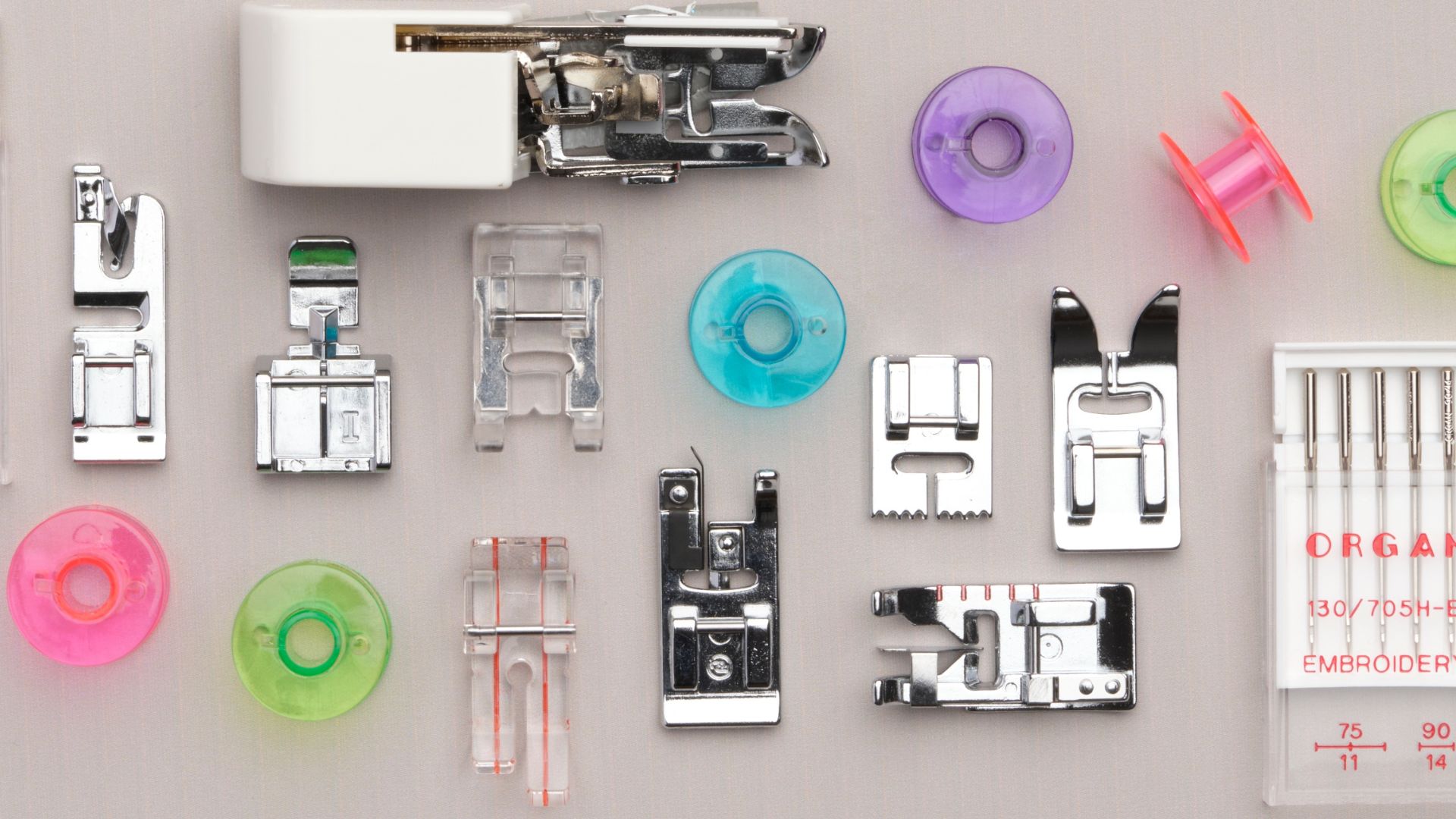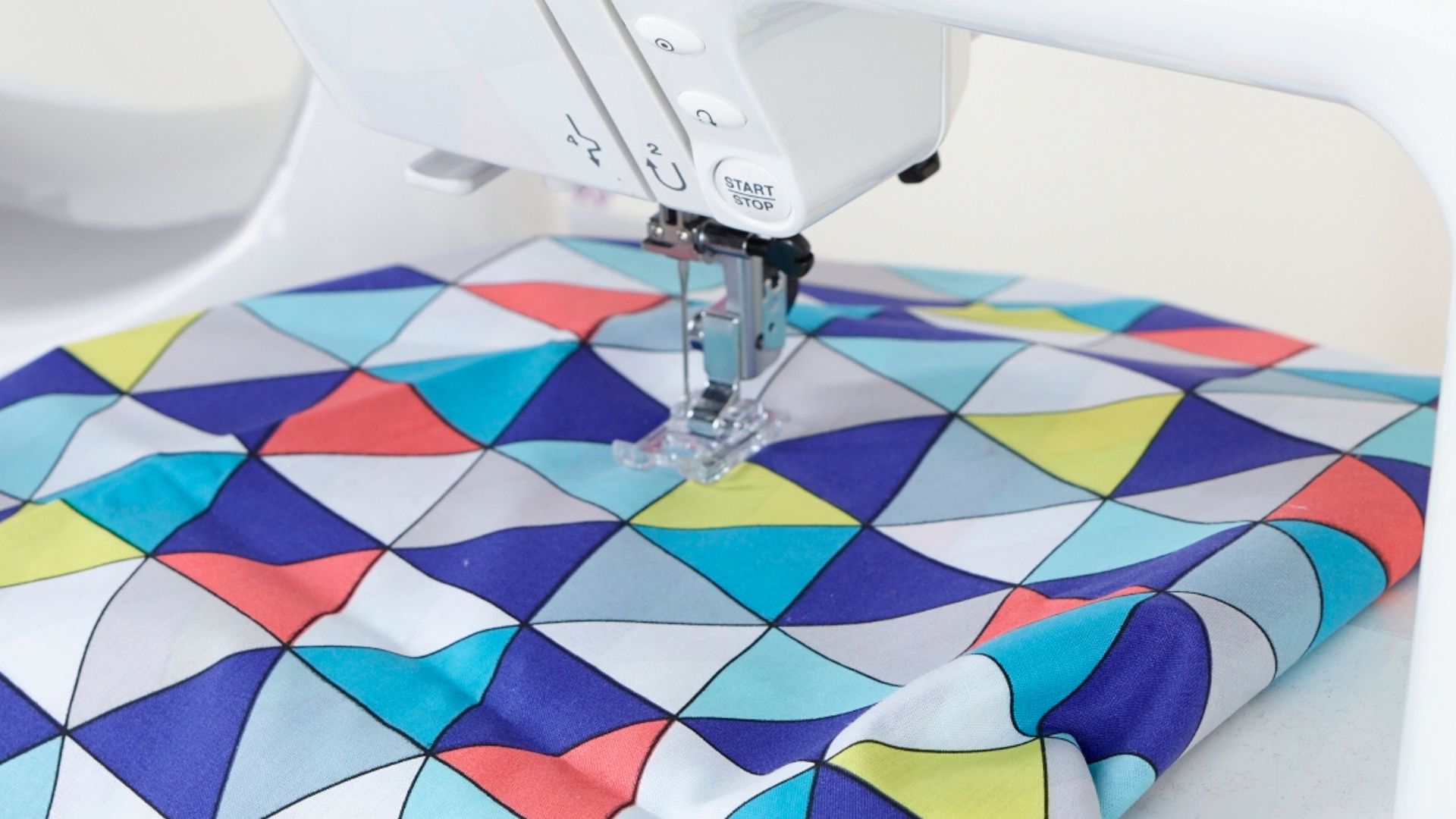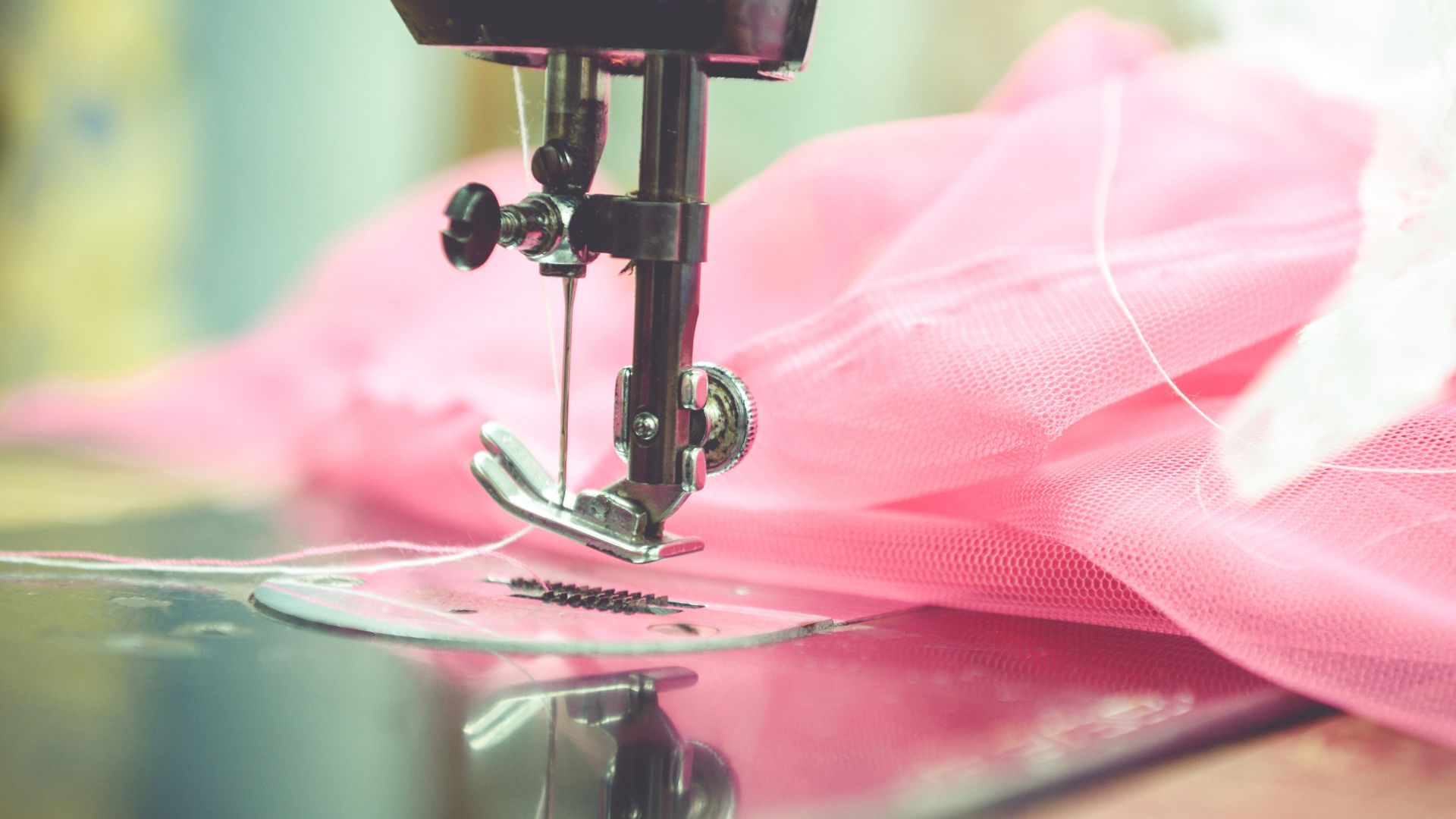 | ||
| Your browser is not supported. | ||
|
Please browse our site using any of the following options:
| ||
5 Types Of Sewing Machine Foot Explained

There are a lot of types of sewing machine foots out there, but how many of them do you actually need? At Spotlight we're delighted to offer you a huge range of sewing machine foot types, (as well as other sewing machine accessories), and we've compiled this quick guide on our top 5 sewing machine foot types everyone needs to know about! Whether you are beginning your sewing journey or looking to elevate your skills and results, find the right sewing machine feet for you. Explore the possibilities and learn more about sewing machine presser feet with Spotlight.
What Is A Sewing Machine Foot?
A sewing machine foot (known commonly as a presser foot) holds your fabric flat as the needle of your sewing machine moves in and out of it. They can be made from steel or plastic, although ones made from non-stick materials like Teflon are used to work with grippy materials like leather or vinyl.
Sewing machine feet come in different sizes and can also have extra markings on them to assist the sewist in creating accurate and straight stitches, and they have two 'toes' which go on either side of the needle to hold the material down equally.
Sewing Machine Foot Terms Explained
Here are some common terms you'll hear a lot when talking about sewing machine foot types:
- Feed dogs: The feed dogs are a set of moving metal bars underneath a sewing machine foot that serve to move the fabric along as it is sewn. Feed dogs move both back and forth, and up and down - their direction can be altered using a lever or dial at the front of the sewing machine.
- Presser foot: This attachment holds the fabric down flat as the needle and thread move through it. You will have a presser foot called a sewing machine foot in this blog.
- Shank: The shank of a presser foot refers to the distance between the bottom of the foot and the centre of the thumbscrew (which you use to attach the foot to the machine). Presser feet can be low shank (short distance), high shank (long distance) and slant shank (angle from the bottom to the screw). Sewing machines will only work with one type of shank, so make sure you're getting the right type for the machine you own!

Our Top 5 Basic Sewing Machine Foot Types
Find out about the top 5 basic types of sewing machine feet you need in your kit. These will allow you to make handy alterations such as sewing zippers and make stylistic choices such as adding decorative stitches. Read about the must-have types below:
1. Walking foot
This essential sewing machine foot is used for dressmaking and patchwork quilting. It allows you to sew multiple layers of fabric at once, as it feeds each layer evenly using its own set of separate feed dogs. This ensures both the bottom and top layers of fabric are fed through at the same rate and everything is kept in shape. They are often used when sewing layers of a quilt, or on stretchy fabrics like knit or jersey.
2. Zipper foot
Used for attaching zippers to fabric, a zipper foot has a gap on either side that you use to attach the zipper - which gap you use depends on which side of the zip you are sewing. Stitch along each side of the zip to fully attach - the gaps in the foot allow you to sew nicely and close to the teeth on each side of your zipper. You can also find adjustable zipper feet that allow you to move the foot closer or further from the zipper teeth, and invisible/concealed zipper feet for sewing an invisible zip.
3. ¼ Inch piecing foot
You can sew accurate 1/4 seams using this specialised foot, instead of having to eyeball it using your needle plate. While it's always nice to sew accurately, this becomes especially important when sewing quilts so you can ensure all your blocks are lining up evenly. Many ¼ inch piecing feet come with markings and guides on them to help you sew those perfect lines.
4. Blind hem foot
Create a barely-visible hem with a blind hem foot, which has a gap down the centre and one larger side than the other. The smaller left side is raised up a little higher than the larger right side to allow for multiple layers of material underneath it, which include the hem. Your sewing machine should have a 'blind hem stitch' function you can use with this foot, so make sure to select it when you need to.
5. Piping foot
Add some decorative stitches and details to your fabric using a piping foot! Piping is a great detail to add to hems, pockets and sleeves, and a piping foot makes the process easy. A piping foot has a small groove you can feed your piping through, allowing you to make neat and accurate lines of piping much easier than if you were using, say, a zipper foot.

Grab All Your Sewing Machine Foot Types At Spotlight
You can find a huge range of sewing machine foot types online or at your nearest Spotlight store! And be sure to browse our sewing and fabrics category for any other sewing supplies you may need. From fabrics at a great price by the metre to all the haberdashery you need, find it at Spotlight.
Finally, make sure you read our in-depth sewing machines buying guide and sewing machine parts buying guide to ensure you're getting the right bits and bobs for your sewing project. We have many more FREE sewing project ideas to get you inspired and an array of great articles on the Create Blog. Some articles you may enjoy include A Guide to Sewing For Beginners and Tips and Tricks For Sewing Fleece and Flannelette.




